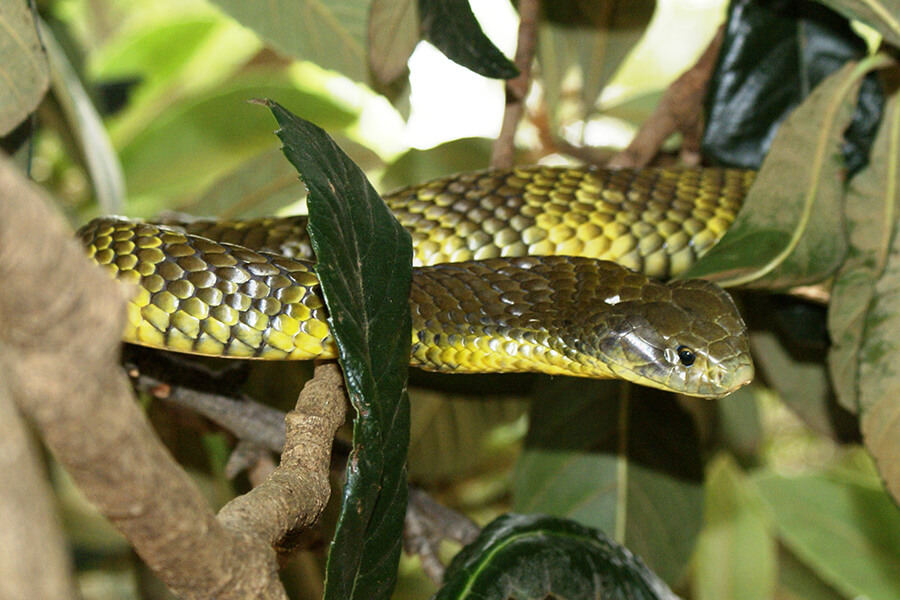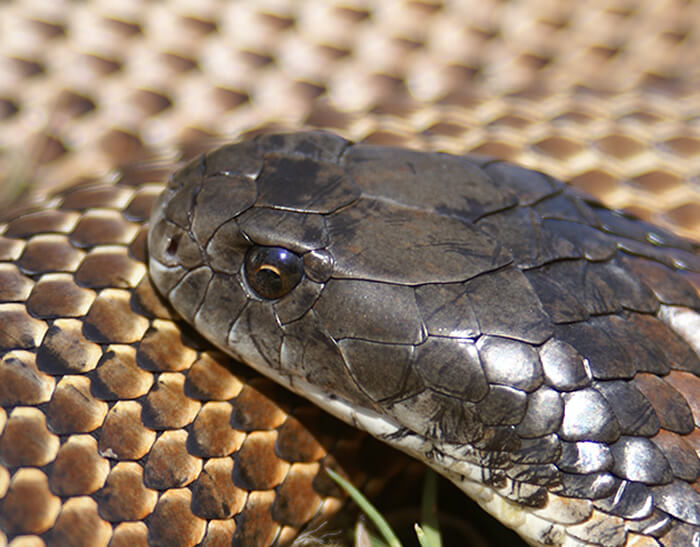Introduction
When it comes to snakes in Australia, 2 of the most notorious varieties are the Eastern Brown Snake and the Tiger Snake Both are extremely poisonous and can present severe threats to human beings, specifically when they are young and much less seasoned. In this post, we're diving right into the distinctions between baby Eastern Brown Snakes and baby Tiger Snakes, offering a thorough introduction that includes their environments, habits, looks, and more. Recognizing these crucial differences is not just academically interesting; it is crucial for safety and recognition in regions where these reptiles are prevalent.
Baby Eastern Brown Snakes vs. Baby Tiger Snakes: Secret Distinctions Explained
Overview of Infant Eastern Brown Snakes
The baby Eastern Brown Snake (taxonomic name: Pseudonaja textilis) is one of one of the most harmful snakes in Australia as a result of its powerful poison and aggressive nature. Recognizing its characteristics can be life-saving.

Physical Qualities of Baby Eastern Brown Snakes
Baby Eastern Brown Snakes typically measure around 20-- 30 centimeters What are the most venomous snakes in Australia at birth. They have a slender body with smooth ranges that may appear shiny. Their pigmentation varies from brown to dark brown or perhaps blackish tones.
- Coloration: Generally lighter than grownups, babies might exhibit unique patterns or markings. Head Shape: They possess a slightly wider head compared to their necks.
Habitat of Baby Eastern Brown Snakes
These snakes like a range of habitats including urban locations, meadows, timberlands, and even seaside regions. They grow where there suffices cover and adequate food supply.
- Urban Areas: Frequently found in gardens or parks. Natural Habitats: Generally populate bushland near farming lands.
Behavioral Attributes of Child Eastern Brown Snakes
Baby Eastern Browns are recognized for their quick reflexes and protective habits. When threatened, they will certainly often act aggressively.
- Defensive Posture: Puffing up their bodies while hissing. Speed: Extremely quick for both evasion and attacking prey.
Venom Strength of Infant Eastern Brown Snakes
The poison of an infant Eastern Brown Serpent is extremely potent. It has neurotoxins that can bring about paralysis or even death if untreated.
Symptoms of Eastern Brown Snake Bite
- Pain at the bite site Nausea Confusion Difficulty breathing
First Help for Serpent Bites from Child Eastern Brown Snakes
If bitten by a baby Eastern Brown Snake, immediate emergency treatment is critical:
Call emergency solutions immediately. Keep the victim calm; motion increases venom spread. Apply a pressure plaster over the bite site to decrease poison transmission. Immobilize the affected limb.Overview of Child Tiger Snakes
On the other hand, we have the child Tiger Snake ( Notechis scutatus), which also lugs large dangers due to its venomous bite and variable temperament.
Physical Attributes of Infant Tiger Snakes
Typically birthed around 20-- does tasmania have snakes 30 centimeters long too, baby Tiger Snakes have distinct banding patterns along their bodies that can differ considerably in shade from olive eco-friendly to black.
- Coloration: The characteristic bands give them their name; nonetheless, some might appear extra uniformly colored. Body Shape: More durable than the slender Eastern Browns.
Habitat of Baby Tiger Snakes
Tiger snakes prefer seaside regions yet can additionally be found inland near swamps or marshes where they hunt for amphibians and fish.
- Wetlands: Their primary habitat as a result of abundant food sources. Coastal Areas: Generally seen basking on rocks near water bodies.
Behavioral Traits of Child Tiger Snakes
While typically much less aggressive than their eastern counterparts when young, infant Tiger Snakes can still present substantial danger when cornered or threatened.
- Defensive Mechanisms: Understood for squashing their bodies when really feeling threatened. Hunting Techniques: Ambush killers that utilize stealth instead of speed.
Venom Strength of Infant Tiger Snakes
The poison from an infant Tiger Snake consists of neurotoxins too but https://erickkpxu586.hpage.com/post1.html is also hemotoxic, impacting blood coagulation causing extreme interior blood loss if left untreated.
Symptoms of Tiger Snake Bite
Unlike bites from an eastern brownish snake:


- Initial discomfort might be accompanied by swelling. Possible bleeding at wounds or gums.
First Aid for Serpent Bites from Child Tiger Snakes
Like with an eastern brownish snake bite:
Call emergency solutions immediately. Avoid movement; keep the victim still. Apply a pressure bandage above the bite area to restrict blood flow. Immobilize the arm or leg while awaiting clinical assistance.Comparison Table
|Attribute|Baby Eastern Brown Serpent|Baby Tiger Serpent|| -------------------------------|------------------------------------|------------------------------------|| Length|20-- 30 centimeters|20-- 30 cm|| Pigmentation|Light/dark brown|Olive green/black with bands|| Environment|Urban locations & & grasslands|Coastal areas & & wetlands|| Actions|Aggressive & & defensive|Less aggressive but will defend|| Venom Type|Neurotoxic|Neurotoxic + hemotoxic|| First Aid Approach|Pressure plaster & & immobilization|Pressure bandage & & immobilization|
Frequently Asked Inquiries (FAQs)
What makes child Eastern Brown snakes dangerous?
Baby Eastern Browns possess very potent poison which contains neurotoxins capable of causing paralysis or fatality if unattended promptly. Their hostile nature includes in their threat as they tend to react defensively when approached.
Are all tiger snakes venomous?
Yes! All tiger serpents carry venom that threatens to humans; nevertheless, their character tends to be much less hostile compared to various other species like the eastern brownish snake unless prompted or cornered.
How do I identify an infant tiger snake?
A juvenile tiger snake generally has actually articulated banding patterns throughout its body which may vary in shade from olive eco-friendly to dark brownish-black tones depending upon its habitat place-- coastal areas commonly show extra dynamic colors than inland specimens.
What must I do if bitten by either snake?
Call emergency solutions promptly! In both instances-- whether bitten by an eastern brown or tiger snake-- maintaining still and applying a stress bandage over the bite mark while awaiting clinical assistance can conserve lives by slowing down toxin absorption right into your bloodstream.
Can I deal with snake bites at home?
It's strongly advised against treating snake bites at home considering that inappropriate techniques might worsen problems! Always seek specialist medical interest immediately following any thought snakebite incident!
Where do these serpents largely live?
Baby eastern browns often tend toward city atmospheres such as gardens while child tiger serpents favor swamps near coastal regions with ample accessibility food sources like frogs and fish!
Conclusion
Understanding the distinctions between infant Eastern Brown Snakes and child Tiger Snakes is not simply an academic exercise-- it's critical for security in areas where these serpents prevail. Both varieties display special physical traits, actions, habitats, and degrees of venom toxicity that call for various techniques concerning emergency treatment therapy after attacks take place.
Knowing how each types behaves can help alleviate risks related to encounters while enhancing awareness concerning Australia's diverse wild animals landscape-- an essential part of living harmoniously within this stunning ecosystem!
In summary, whether you're treking via bushland or appreciating outdoor activities in urban setups throughout Australia-- remain sharp! Expertise really is power when it boils down securing yourself versus potential threats hiding within our natural world!
By maintaining informed concerning species like Pseudonaja textilis and Notechis scutatus, you're taking proactive steps towards guaranteeing not just your own safety and security yet likewise fostering respect in the direction of these impressive animals that share our planet!